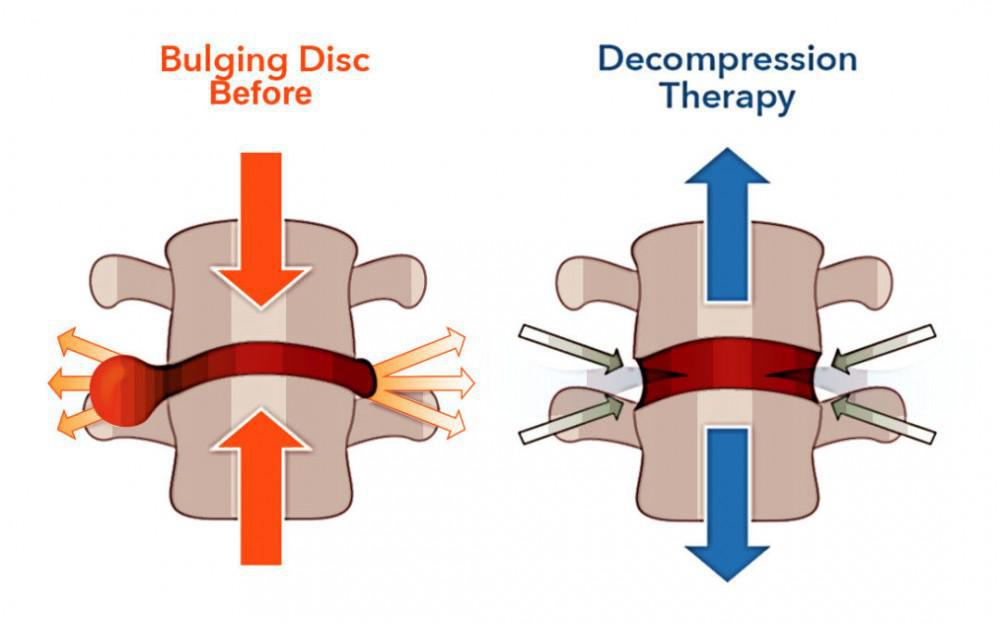Spinal Decompression Surgery – Types, Risks, Cost & Recovery

If you face intense back pain and have difficulty performing day-to-day activities, you have an idea of how hard life can be at those times. Spinal problems can affect the way you function and complicate your life. It can trigger aches, weakness, and other neuromuscular complications. If this problem is not solved and you are faced with the worst spinal pain and other dangerous symptoms, doctors will suggest Spinal Decompression surgery.
There are a lot of symptoms that cannot be relieved without operating on the spine. This article will look at the risks, costs, and recovery period of Spinal Decompression surgery.
What is Spinal Decompression Surgery?
Many doctors will suggest Spinal Decompression Surgery in case of ruptured or compressed nerves, bony growth, and bulging. It is performed to relieve back pain and reduce the symptoms caused by spinal compression.
To reach the pressurized nerve, the surgeon cuts across the affected section of the spine, all the way down to the lamina. The tissue will be moved back towards the vertebral column’s middle, and a portion of the vertebrae or ligament pushing on the nerve will be separated.
Types of Spinal Decompression Surgery
If your ailment necessitates surgery, you should discuss it with a board-certified spine specialist. Your surgeon will perform pre-surgical and clinical tests to identify the most suitable operation for you. The main goal of these operations is to alleviate the pressure on the impacted nerve root. The most popular decompression surgeries are as follows:
-
Laminotomy and Laminectomy:
The lamina is a bony shape that runs behind the spinal column. It aids in the formation of the spinal canal. Impaired bone developments can reduce the entrance of the spinal column in some circumstances. Bone spurs can form for many reasons, such as facet joint arthritis, genetic makeup, or injuries.
The complete lamina is removed during a laminectomy to make more room for the spinal column. Furthermore, your surgeon may extract only a portion of the lamina, such as bone spurs. A laminotomy is a medical term for this process.
-
Foraminotomy:
Nerve cells move through a hole in the spine called the foramen. A foraminotomy removes bone on the foramen’s rim to allow additional room for the nerve cells. A fraction of vertebral bodies may be excluded during this process if it pushes against the nerve root.
-
Discectomy:
The aging process or trauma can damage the spherical discs between the vertebral bodies. The spinal column can become unsteady if these plates lose their shape. As a result, nerve compression may occur.
The surgeon will remove segments or the whole defected disc during a discectomy. In some instances, extracting only a tiny portion of a disc may be suitable. This process, identified as a microdiscectomy, includes deleting the sections of a broken disc that push on a nerve. Microdiscectomies may not necessitate additional surgical treatment.
-
Fusion of the Spine:
Spinal fusion surgery may require removing plates from one or more vertebral columns and other more complicated processes. Fusion surgery uses bone grafts and surgical equipment to stabilize the vertebrae. The vertebrae eventually fuse to form one strong bone. This improves the vertebral column’s stability and may inhibit further nerve discomfort.

Spinal Decompression Surgery Recovery Time
The majority of these processes necessitates general anesthesia. You will be relocated to a recovery area following surgery, where your vital signs will be supervised until the anesthesia wears off. Based on the surgical procedure, you may need to stay in the hospital for a day or two to confirm that you are steady and that the procedure was successful.
Pain relievers may be used to alleviate any post-surgery uneasiness. You may also need to ice the incision area several times a day to decrease inflammation and discomfort. When you can continue routine functions, the surgeon will notify you. Physical therapy may also be used to aid in healing.
Follow your discharge instructions and any therapeutic suggestions. It will improve your chances of a successful surgery—the vast majority of people who have spinal decompression surgery disclose pain relief and improved nerves and muscles. Lastly, it may take you 4-6 weeks to start mobility again.
Interesting Read: Benefits and other details about chiropractic care for babies.
Risks of Spinal Decompression Surgery
Problems are possible with any surgery, and spine surgery is no exception. The types of risks one can face in Spinal Decompression surgery are:
-
Anaesthesia Dangers:
The majority of spine surgeries are done under general anesthesia. You will be prescribed treatment to put you to sleep via an intravenous line, so you will not feel any pain during the process. Anesthesia risks are uncommon but severe. Heart attacks, strokes, neurological damage, and death are dangerous. These problems could result from adverse drug reactions or side effects from other health conditions.
Do you know – Can chiropractors write prescriptions?
-
Bleeding:
Your spine surgeon’s approaches are diligently implemented from cut to surgical wound closing to minimize and decrease blood loss. Nevertheless, large blood vessels can be damaged, resulting in bleeding.
-
Infection:
In most patients, the risk of contamination after spinal surgery is minor. You will be given IV antibiotics right before surgery to decrease your chance of infection. If a spinal infection does grow, it may be shallow, or it may disperse deeper into the brainstem and vertebral column.
-
Blood clots:
Some patients are faced with the formation of blood clots after the surgery. If some of these clots can travel to the heart or lungs, they can block the vein leading to more complications.
Also read: Can a Chiropractor Help You With Sciatica – Detailed Answer
Cost of Spinal Decompression Surgery
The cost of Spinal Decompression surgery depends on the severity of the problem and the region where you live. The surgery cost has two elements: the hospital and the surgeon who will operate on you.
The typical cost lies between $65,000 to $80,000. In more advanced countries and regions, the cost can exceed these numbers.
Final Thoughts
Spinal Decompression surgery might have complications, but it is the best solution to relieve back pain. The surgery is essential when the severity of the problem cannot be treated with medications alone. Choosing the right doctor and hospital will make your process easier and steady.
If you wish to learn more, here’s a complete guide to Spinal Decompression Therapy.




